Labor Day weekend proved to be very warm this year in northern Illinois, with temps in the low 90s F some days, though I understand that a front will blow through soon and cool things off. The beginning of the slide into ice and snow, in other words.
Almost the entire time I was in the Pacific Northwest, the weather was clear and the temps pleasant — 70s and 80s F every day, except for the day I left, August 29, when it rained. Early on that morning, I lay nearly awake and heard the pleasant sound of rainfall. That was the first time I’d experienced rain in Seattle.
I read somewhere or other that the main sign of the Pike Place Market in Seattle — which actually says Public Market Center — is the most photographed spot in the city. I don’t know how you’d determine such a thing, but I’m sure the sign must be the subject of a lot of pictures. I did my little part to make it a famed Seattle image as I arrived at the market just after noon on August 27.
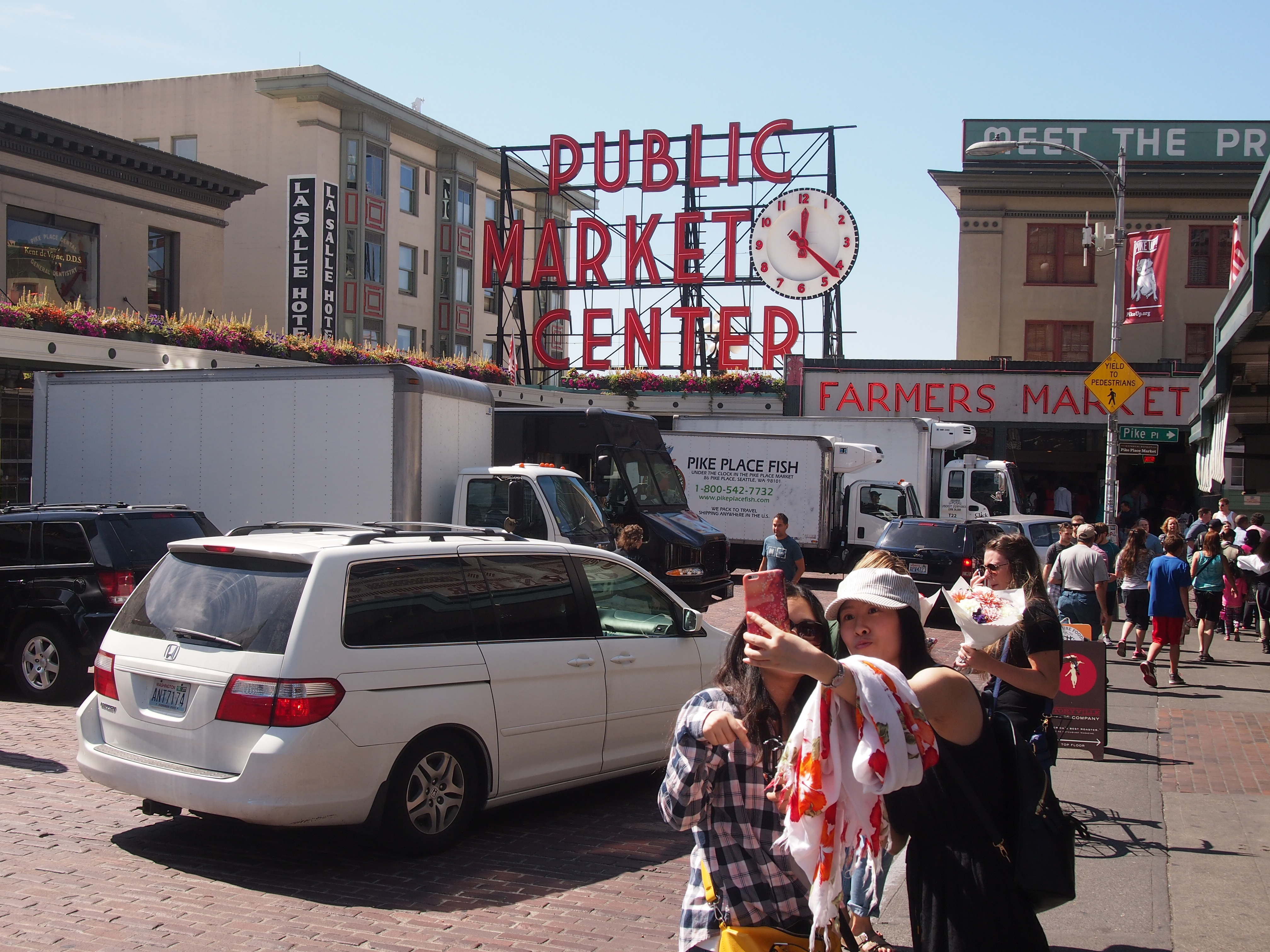 Then there’s Rachel the Pig.
Then there’s Rachel the Pig.
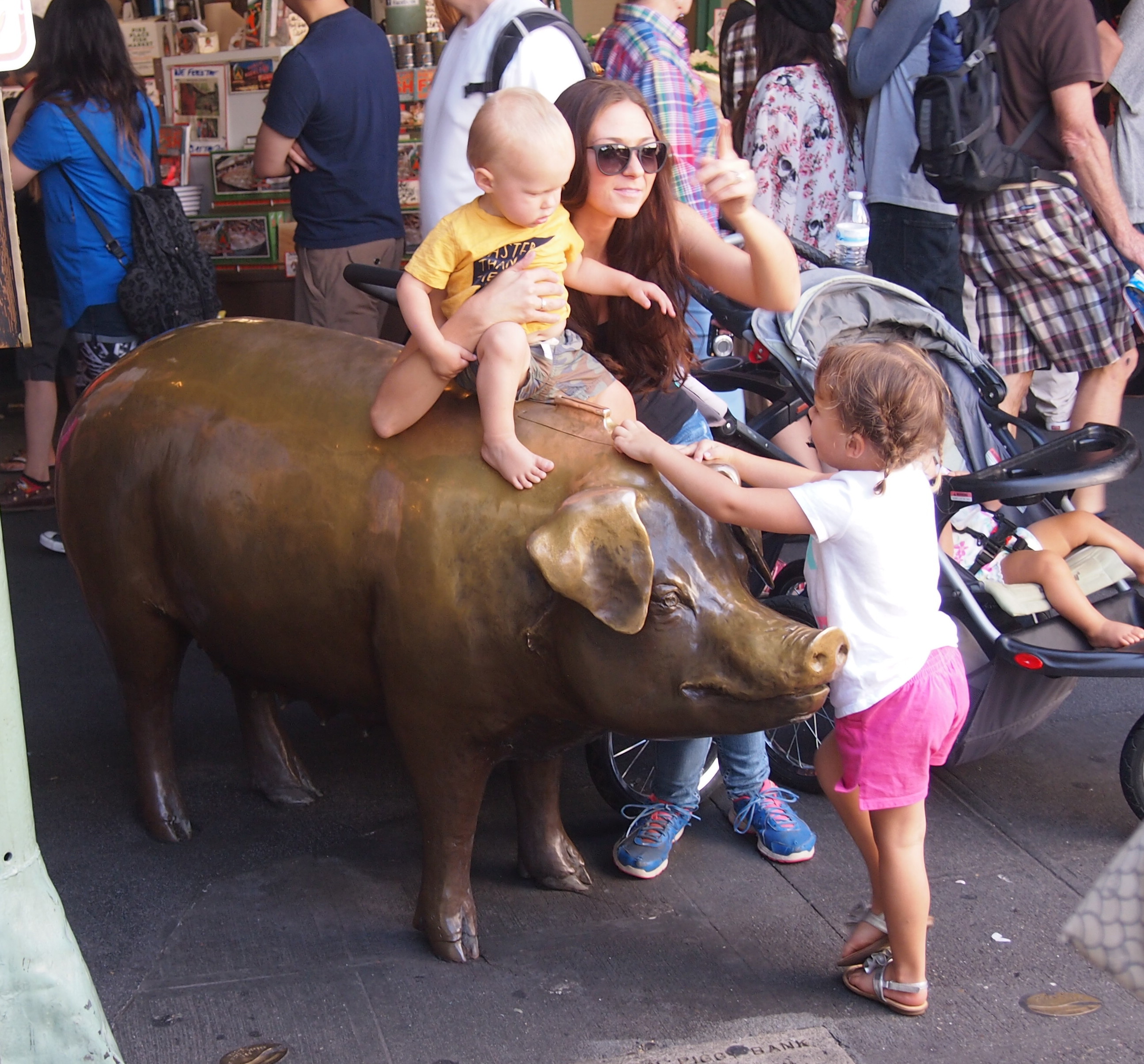 The market’s web site says: “Rachel arrived at the corner of Pike Place under the iconic ‘Public Market Center’ sign and clock in 1986. She is a bronze cast piggy bank created by Georgia Gerber, a sculptor from Whidbey Island, Washington. Weighing in at 550 pounds (250 kg), Rachel was named after a real 750-pound pig who won the 1985 Island County Fair. Her cousin, Billie the Piggy Bank, arrived in the Market in 2011 and sits on Western Avenue at the bottom of the Hillclimb.
The market’s web site says: “Rachel arrived at the corner of Pike Place under the iconic ‘Public Market Center’ sign and clock in 1986. She is a bronze cast piggy bank created by Georgia Gerber, a sculptor from Whidbey Island, Washington. Weighing in at 550 pounds (250 kg), Rachel was named after a real 750-pound pig who won the 1985 Island County Fair. Her cousin, Billie the Piggy Bank, arrived in the Market in 2011 and sits on Western Avenue at the bottom of the Hillclimb.
“Rachel was the inspiration behind the ‘Pigs on Parade’ fundraiser throughout downtown Seattle in 2001 and again in 2007 for the Market’s centennial celebration.”
Whatever else it is, the Pike Place Market is popular. This is the Pike Place-level crowd on a Thursday, among the purveyors of flowers and clothes and fish and other things.
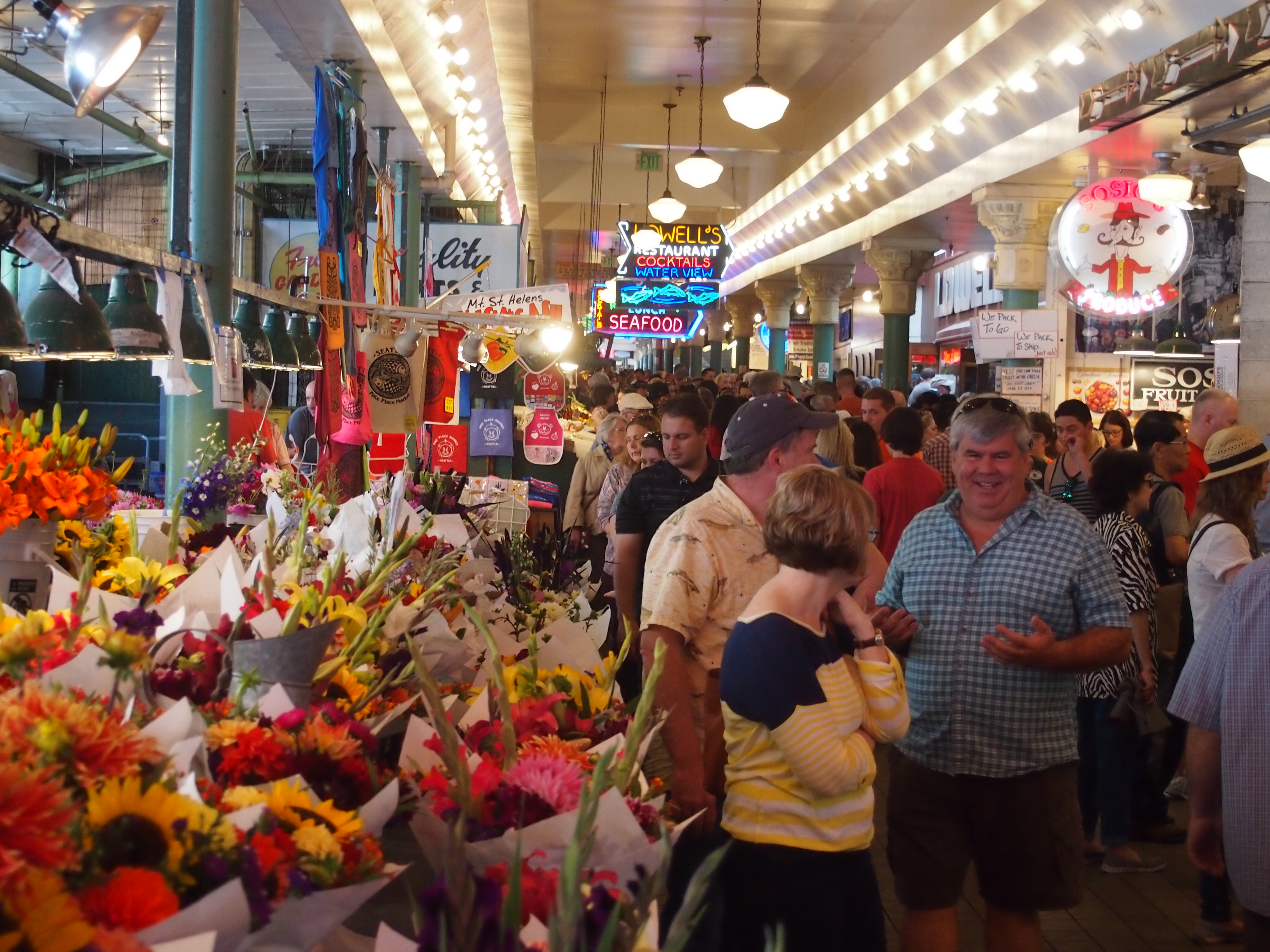 The market tells us: “In 1906-1907, the price of produce—onions namely—soared, leaving the farmers none the richer and the citizens angry over the price gouging. The uproar led one local official to try to find a solution. In the summer of 1907, Seattle City Councilman Thomas Revelle proposed the city create a public market place where farmers and consumers could meet directly to sell and buy goods and thereby sidelining the wholesalers.
The market tells us: “In 1906-1907, the price of produce—onions namely—soared, leaving the farmers none the richer and the citizens angry over the price gouging. The uproar led one local official to try to find a solution. In the summer of 1907, Seattle City Councilman Thomas Revelle proposed the city create a public market place where farmers and consumers could meet directly to sell and buy goods and thereby sidelining the wholesalers.
“On the public market’s first day, August 17, 1907, crowds of shoppers seeking fresh produce and bargains descended upon the new marketplace. The first farmer sold out of produce within minutes. Within a week, 70 wagons were gathering daily to sell along the newly named Pike Place, a wooden roadway that connected First St. to Western Ave.
“Developer Frank Goodwin, who had recently returned with a small fortune from the Klondike Gold Rush, saw an opportunity in the flourishing market and began construction of the permanent arcades that make up the heart of today’s Market. The Market prospered during the 1920s and 1930s, and was home to a lively mix of Japanese and Italian American farmers, struggling artists, political radicals, and eccentrics.”
The market was run down by the 1960s, and true to the spirit of the times, the plan was to tear it down. I shudder to think what would be there now had that happened. Ugly parking garages, maybe. Something that could be anywhere, rather than what it is, something unique to Seattle.
“When the maze of aging buildings was slated for demolition in the 1960s, architect Victor Steinbrueck rallied Seattle to ‘Save the Market,’ ” the market web site continues. “Voters approved a 17-acre historic district on November 2, 1971, and the City of Seattle later established the Pike Place Market Preservation and Development Authority to rehabilitate and manage the Market’s core buildings.”
And so it is in the early 21st century. An expansion’s under way now as well. It’s a major tourist draw, and for all I know Seattleites like it too. The crowds couldn’t all be tourists.
Besides, the seafood looks pretty good.
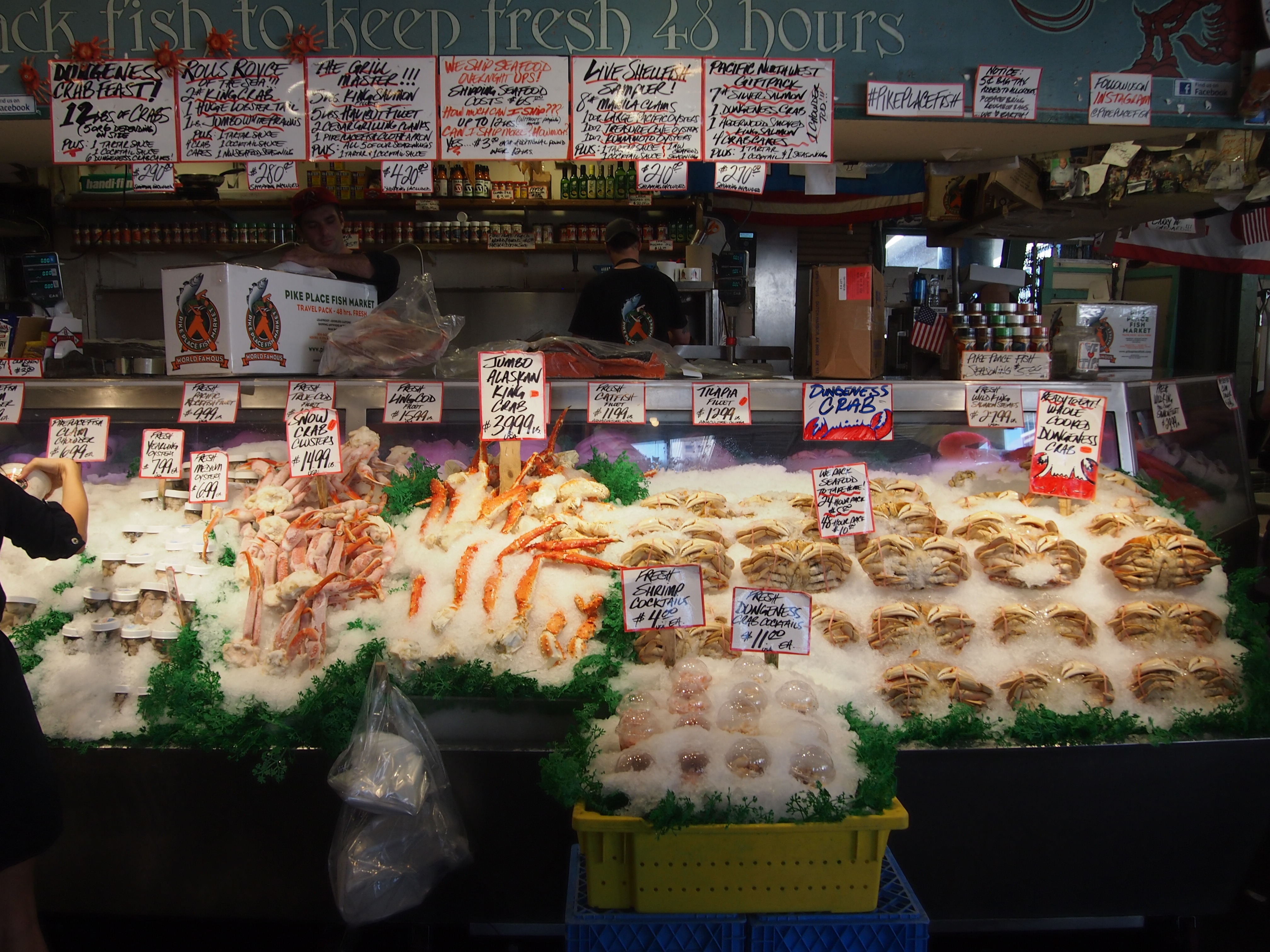 So do the vegetables.
So do the vegetables.
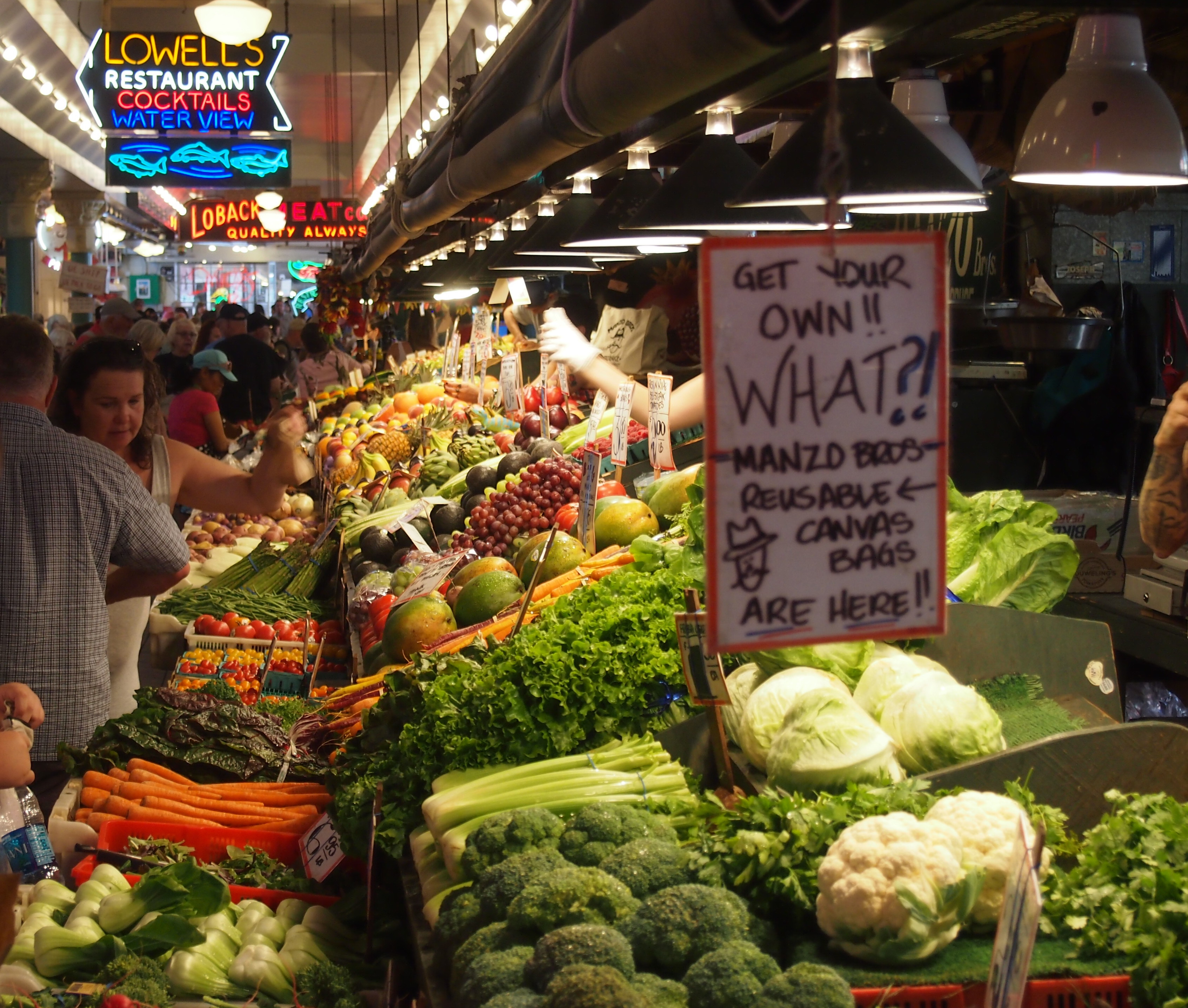 The fishmongers offer expert advice, no doubt.
The fishmongers offer expert advice, no doubt.
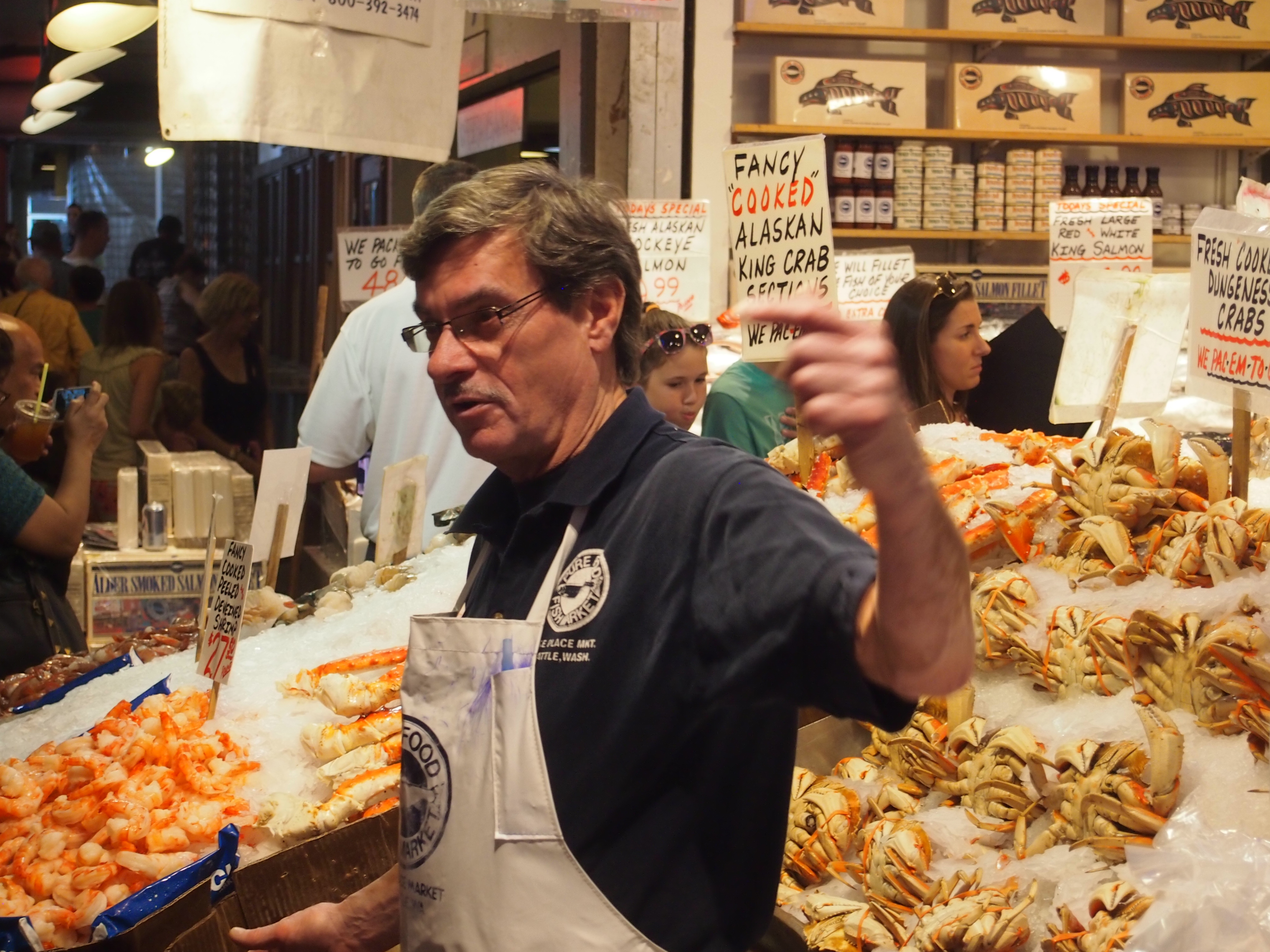 The market’s built on a slope, so it has a number of levels below Pike Place, accessible by stairs and elevator.
The market’s built on a slope, so it has a number of levels below Pike Place, accessible by stairs and elevator.
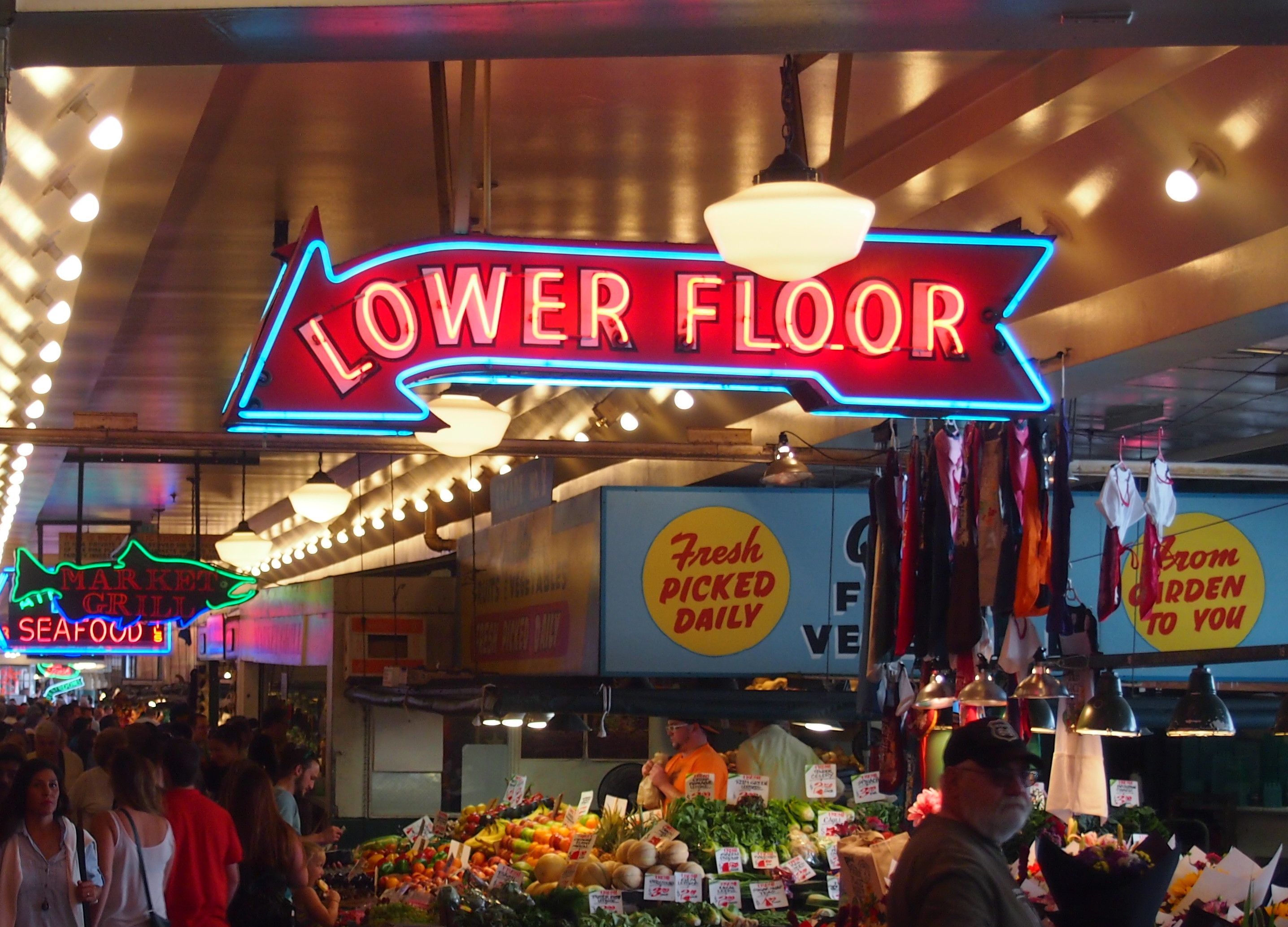 The lower levels are a mix of shops, including sellers of art, books, candy, flowers, gifts, kitchen equipment, imported goods, jewelry, tobacco, and toys, along with some more unusual ones, such the Pike Place Magic Shop.
The lower levels are a mix of shops, including sellers of art, books, candy, flowers, gifts, kitchen equipment, imported goods, jewelry, tobacco, and toys, along with some more unusual ones, such the Pike Place Magic Shop.
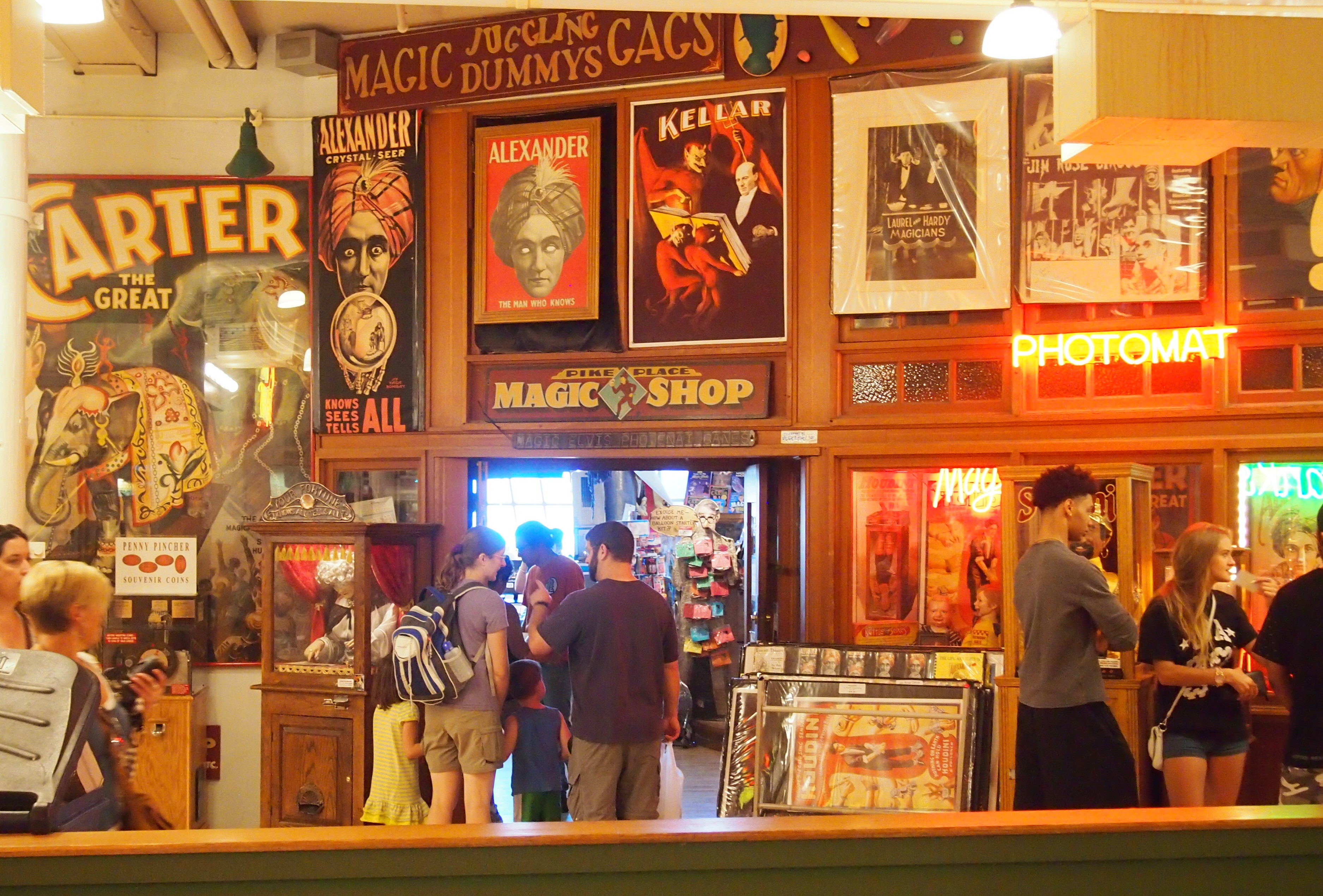 One place I missed at the market was Metskers, a map store. It has a branch at Seatac Airport, and I chanced across it there just before I left Seattle. I had a few minutes. I could have spent an hour looking at all the fine, fine maps. I bought a Chicago Popout Map — which I can use — and some postcards, just to support the place. The clerk told me the main store was at the Pike Place Market. Argh.
One place I missed at the market was Metskers, a map store. It has a branch at Seatac Airport, and I chanced across it there just before I left Seattle. I had a few minutes. I could have spent an hour looking at all the fine, fine maps. I bought a Chicago Popout Map — which I can use — and some postcards, just to support the place. The clerk told me the main store was at the Pike Place Market. Argh.